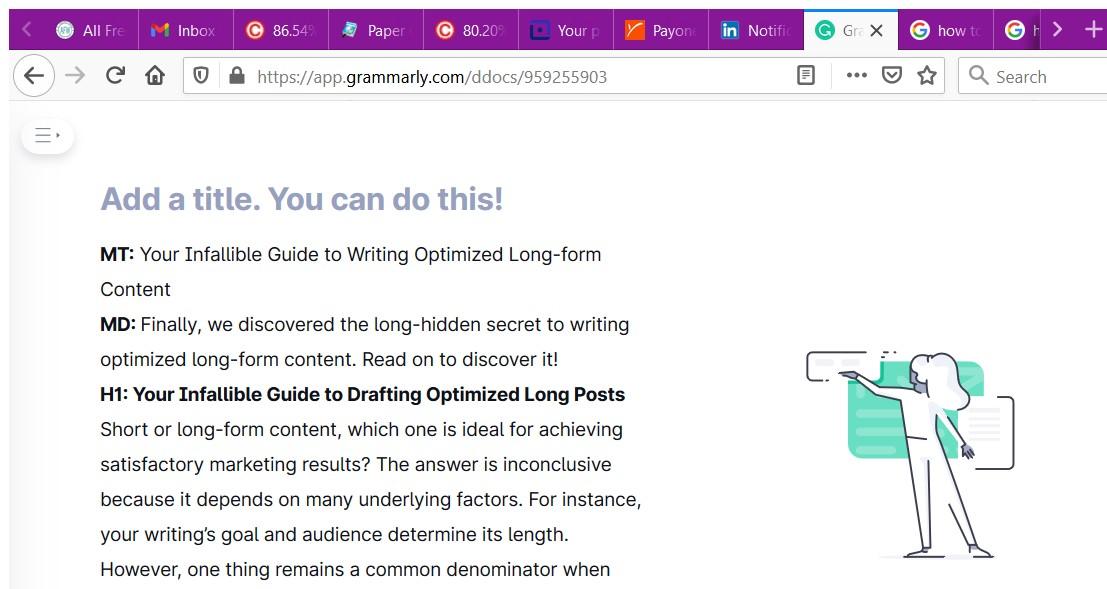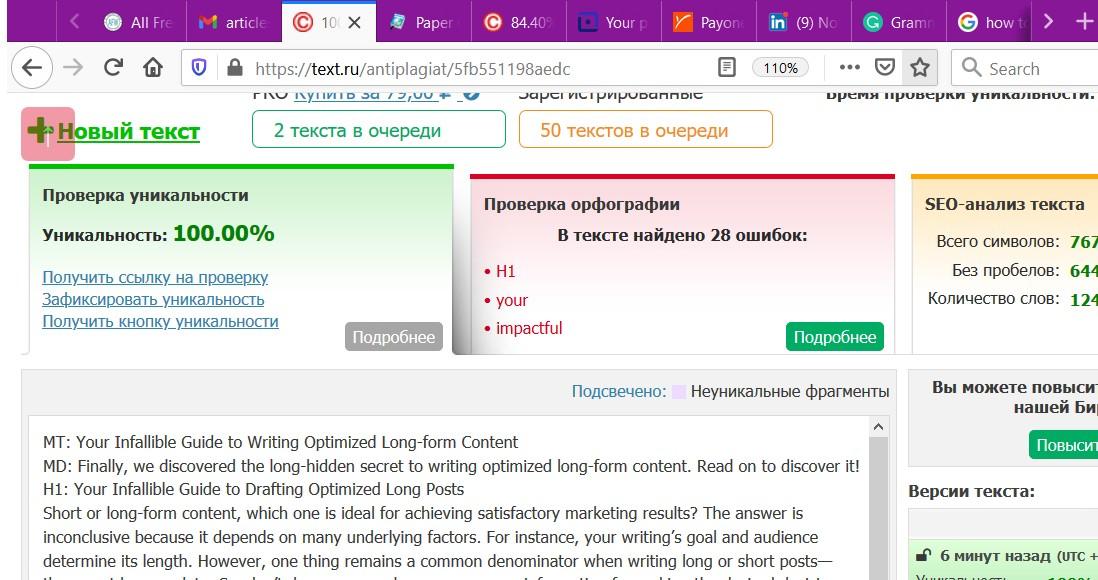Short or long-form content, which one is ideal for achieving satisfactory marketing results? There is no definite answer, as it depends on many underlying factors. For instance, your writing’s goal and audience determine its length. However, one thing remains a common denominator for writing long or short posts—they must be complete. So, don’t deny your reader any necessary information for making the desired decision just because you want to be brief.
But how do you write optimized long-form content that meets your audience’s needs? To answer this question, OUR WEBSITE composed this guide to give you insights for composing impactful long content. Keep reading to sharpen and perfect your long-form writing.
Define It and Its Purpose
First, define long-form content and understand its purpose to write it well. You need to understand how it differs from its short-form counterpart and why. Otherwise, you will achieve little with your writing endeavors.
Long-form content refers to posts ranging between 700 and 2,000 words. However, its upper limit varies, depending on other factors that could bring it to 7,500 words. For instance, your content’s goal, audience, scope, and topic depth determine its final length.
Briefly, long-form content differs from short-form writing in the following ways:
- Long-form writing is like a meal while its counterpart is like a snack;
- Long-form content needs more critical thinking than short content;
- Long-form writing requires more in-depth reading while its counterpart can be skimmed;
- At times, long-form content requires gating to let in readers while its counterpart doesn’t.
Select Your Topic Strategically
Choose your topics and final titles carefully before writing. For example, select an evergreen topic that your readers will always find useful. Choose a topic that interests your target audience for sure.
You can also talk to your trusted team members or friends who understand your audience properly. These people are better positioned to help you understand what your readers need and want to learn. Alternatively, you could check out your analytics to see how well your posts in that area fared. Lastly, use Google trends to understand what people want to learn about in a particular area.
Give It a Strong Beginning
You can also optimize your long-form pieces by giving them a strong start. The head of OUR WEBSITE writing department thinks that starting on a firm footing makes your readers want to read your writings. For instance, your opening paragraph should tantalize them to dig deeper into your posts. Additionally, you may create an infographic kind of summary that captures what the reader will learn.
If you are writing to sell a service or product, list the product’s or service’s salient features. Remember to show your readers how those features benefit them by meeting their needs.
Use Catchy Subheadings
Just as with your main title, use catchy subheadings throughout the content. Remember, these subtitles serve a transitional role by showing your readers what lies ahead in every section. Otherwise, reduced interest might make your audience stop reading mid-way.
Organize Your Thoughts
Writing long posts is riskier than shorter ones because you’re handling more ideas and having higher digressing chances. Therefore, mind your organization. Organize your thoughts and ideas well from start to last.
Remember, organized ideas and thoughts make your readers want to continue reading. If your writing is disorganized, it’s easy to confuse your audience and shortchange its purpose.
Choose Your Format Carefully
Formatting is another critical factor that should inform your long-form writing. So, only choose it after determining your writing’s purpose and audience. You may determine to write a blog post, whitepaper, listicle, case study, or ebook. A whitepaper could do well if you want to reach business executives with practical solutions to their organizations’ problems.
OUR WEBSITE specialists concluded the following about the formats discussed above:
- Write in-depth listicles and “how-to” articles if you want to get more backlinks;
- Do more visual content, especially infographics, if you seek to harvest more shares on social media;
- Write gated content like ebooks and white papers to generate more sales leads;
- Zero on webinars, product brochures, whitepapers, and case studies if you intend to get your prospective clients down the sales funnel
Optimize Visuals
We all are visual creatures. Common sense observation shows that people are more attracted to visually rich content than pure text. Remember the adage that says that a good picture speaks louder than a thousand words. Therefore, enrich your long-form content with relevant visuals like photos or videos.
Moreover, use high-quality visuals to increase the chances of retaining your audience’s attention and make the text more reader-friendly.
Optimize It for Social Media Engagement

The social media era is around to stay for the long-term. Thus, it would be beneficial to consider social networks when composing your posts. The reason is that such content enhances your organic search and rankings in Google. For instance, your posts will rank higher if more people share them on social networks.
Moreover, social media can make your information more magnetic. Your followers can comment and like it. The ease of liking, sharing, and commenting on your content on social media makes it a better platform than blogs and websites. For example, your readers don’t need to create accounts or sign in to comment on your articles. Therefore, optimize your posts for these platforms.
Optimize It for SEO
SEO is around to stay for the foreseeable future. Thus, optimize your writing to let Google avail it to your target readers on its first page. It’s also beneficial to include some inbound and outbound links in your writings.
Inbound links will direct your audiences to similar content. Inversely, outbound links will connect them to similar but non-competitive content.
Ask for Feedback
Optimizing your long-form posts for your readers requires you to ask them for feedback. Do this if they seek information to ensure that your posts answer their queries. Also, including feedback lets you know what your readers are looking for right from their mouths.
Don’t Forget a Strong CTA
If necessary, include a call to action after concluding your post. Let your CTA be impactful enough to cause your readers to convert by taking the desired action. For example, specify if you want them to subscribe to your mailing list, buy a product, or sign up for a service.
Whatever your goal, don’t assume that your readers will guess it for themselves. Be assertive and tell them what you want them to do. Also, position your CTA button strategically for your readers to click it easily. Your readers shouldn’t struggle to look for a conversion button. So, make it easy for them to convert when they are ready.
Closing Remarks
Writing impactful long content shouldn’t be a preserve of a few chosen geeks. Anybody can write optimized long posts that convert and deliver satisfactory results. You can gain a name among expert long-form content writers as long as you know how to do it.
We hope the insights our guide delivered will inspire and sharpen you to write excellent long-form content. It’s up to you to use these nuggets to improve your writing of the long-read type.





Comments are closed.